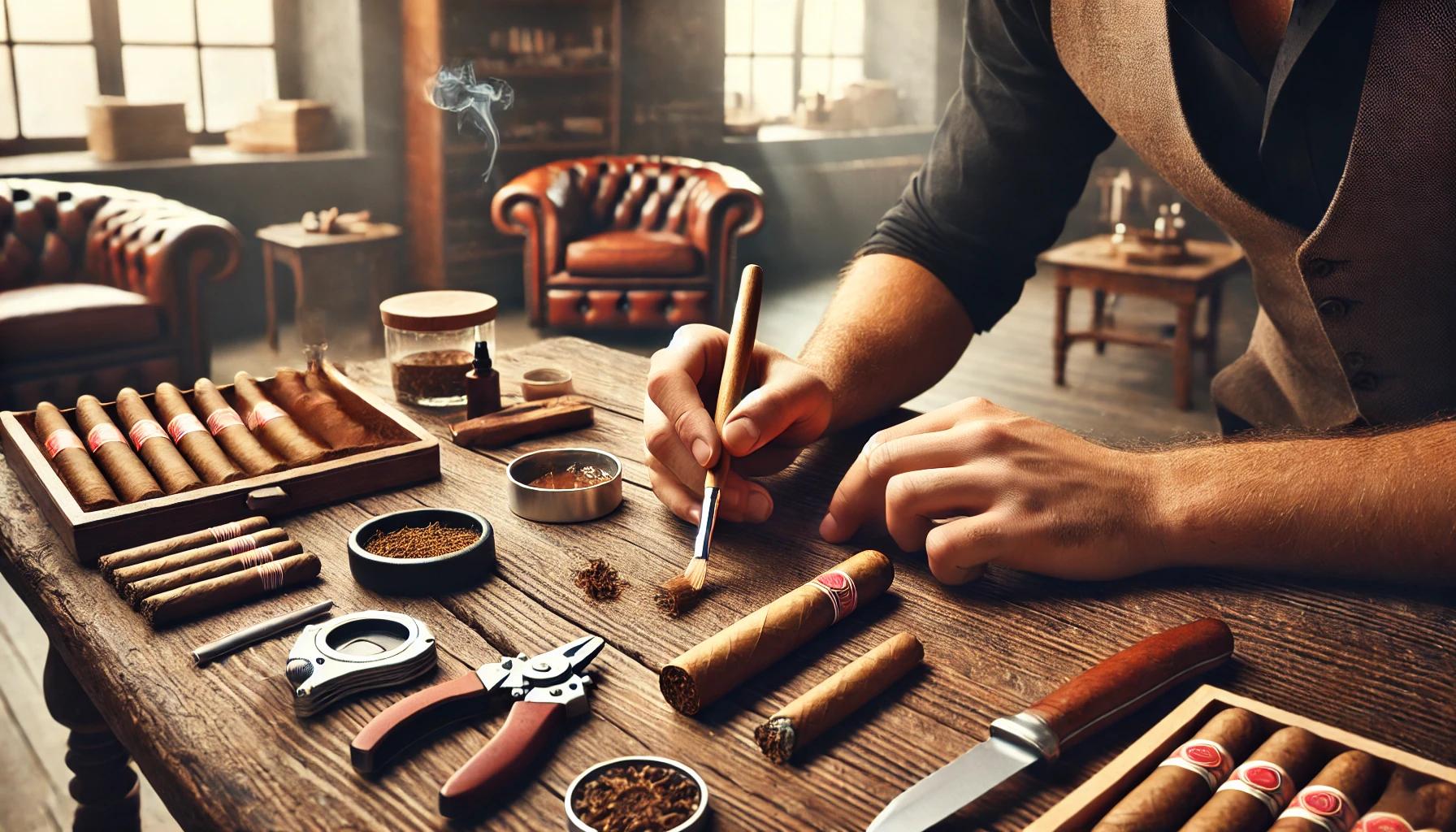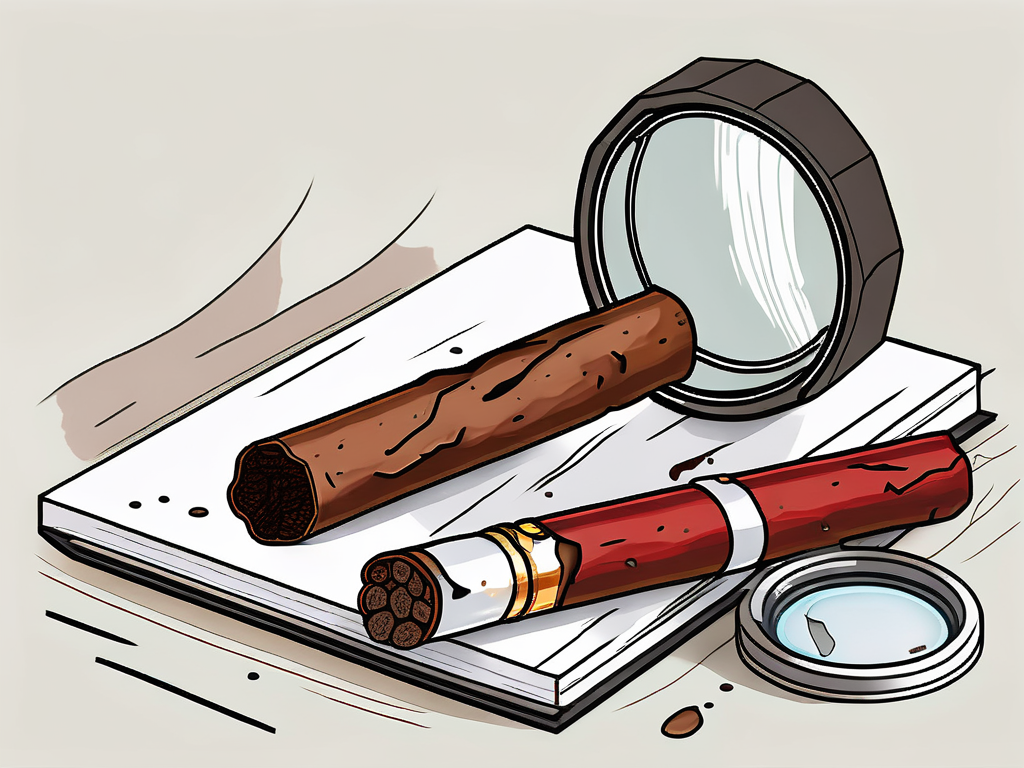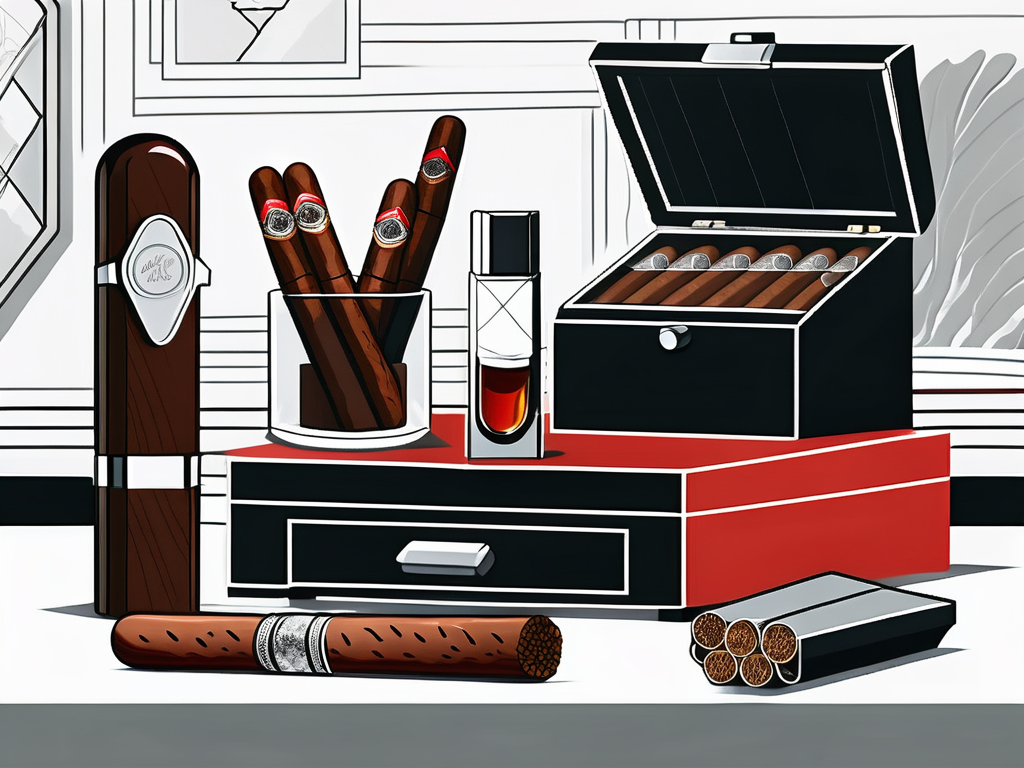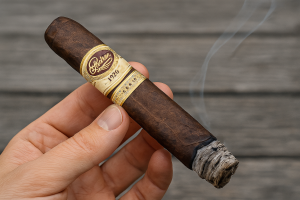How to Repair a Broken or Canoeing Cigar: Expert Tips for a Smooth Cigar Experience

Did you know that cigars have been enjoyed for centuries, dating back to ancient times? Their rich history and complex flavors make them a favorite among enthusiasts.
However, even the most carefully stored and handled cigars can sometimes suffer damage, such as cracks or canoeing. But fear not! In this article, we will explore the art of repairing a broken or canoeing cigar, so you can continue to enjoy your favorite smoke without interruption. Read on and learn:
- How to identify the issue with your cigar?
- Which steps you need to take in order to fix it?
- How to prevent future damages?
Step-by-Step Guide to Fixing a Broken or Canoeing Cigar
Repairing a broken cigar may seem daunting, but with the right approach and tools, you can restore it to a smokeable condition. Follow this step-by-step guide to fix your broken cigar and ensure an enjoyable smoking experience.
1. Preparing the Cigar for Repair
Before you start the repair process, it’s important to prepare the damaged cigar properly:
- Moistening the Wrapper: Gently moisten the area around the crack or tear with distilled water or saliva. This makes the wrapper more pliable and easier to work with.
- Softening the Wrapper: Allow the moisture to be absorbed for a few moments, softening the wrapper and making it less likely to crack further during the repair process.
2. Applying the Adhesive
Using a food-grade adhesive specifically designed for cigars ensures a safe and effective repair:
- Choosing the Right Adhesive: Use a pectin-based or cigar-specific adhesive to avoid altering the cigar’s flavor.
- Precise Application: With a toothpick or cigar repair needle, apply a small amount of adhesive to the edges of the crack or tear. Distribute it evenly to prevent excess adhesive from seeping into the tobacco.
- Sealing the Damage: Press the edges of the wrapper together gently, holding them in place for a few moments to allow the adhesive to set.
3. Securing and Drying the Repair
Once the adhesive has been applied, ensure the repair sets properly for a seamless finish:
- Holding the Wrapper in Place: Use your fingers or a small clamp to hold the wrapper edges together until the adhesive dries.
- Allowing Adequate Drying Time: Let the adhesive dry completely before handling the cigar further. This ensures a strong bond and prevents the wrapper from coming apart during smoking.
4. Inspecting and Finishing Touches
After the adhesive has dried, inspect the repair to ensure it is clean and secure:
- Removing Excess Adhesive: Carefully remove any excess adhesive with a toothpick or a soft cloth. Be gentle to avoid damaging the repaired area.
- Final Inspection: Check the repaired area for smoothness and integrity. Ensure there are no loose edges or uneven spots.
- Optional Patching: For larger tears or cracks, consider using a piece of extra wrapper leaf to patch the area. Apply the adhesive to the patch and press it over the damaged section, smoothing it out to blend seamlessly with the original wrapper.
By following these steps and using the right tools, you can effectively repair a broken cigar and enjoy it without compromising the smoking experience.
Identifying the Problem with Your Cigar
Signs of a broken cigar are relatively easy to spot for keen-eyed aficionados. Look for cracks or tears along the wrapper, paying special attention to the foot and the cap—the ends of the cigar. These visible flaws can affect both the cigar's structural integrity and smoking experience.
Additionally, if you notice your cigar burning unevenly, resembling a canoe, you may be dealing with canoeing. By identifying these issues, we can take the necessary steps to repair and prevent further damage.

Signs of a Broken Cigar
A cigar with a cracked or torn wrapper is undoubtedly a sad sight for any enthusiast. Not only does it affect the overall appearance, but it can also impact the burn and flavor of the cigar. Take a close look at the wrapper and inspect it for any irregularities.
When it comes to repairing a broken cigar, precision is key. Using delicate and intricate techniques, you can carefully patch up any cracks or tears, ensuring that the wrapper is seamless once again. This meticulous process not only salvages the cigar but also guarantees an enjoyable smoking experience.
What is Canoeing in Cigars?
Imagine eagerly lighting up your cigar, only to find that it burns unevenly, resembling a canoe. This frustrating phenomenon, aptly named canoeing, is a common occurrence among cigars.
Canoeing typically happens due to uneven lighting or a poorly rolled cigar. When one side of the cigar burns faster than the other, it creates an uneven burn line that resembles the shape of a canoe.
Gathering the Necessary Tools for Repair
Repairing a broken or canoeing cigar requires a few essential tools. Firstly, you will need a small container of food-grade adhesive, specifically designed for repairing cigars. Avoid using regular glue or adhesives, as these can have harmful effects on the taste and aroma of the tobacco. Secondly, prepare a couple of toothpicks or a cigar repair needle, which will help with the application of the adhesive. With these tools at your disposal, you're ready to bring your cigar back to its former glory!

Essential Tools for Cigar Repair
Repairing a broken or canoeing cigar requires the right tools and materials to ensure a seamless and effective fix. Whether you're dealing with a small tear in the wrapper or an uneven burn, having the appropriate equipment on hand can make all the difference.
In this section, we will cover the essential tools and materials you'll need to restore your cigars to their original condition, allowing you to continue enjoying a flawless smoking experience. From specialized adhesives to precision tools, this guide will equip you with everything necessary to handle common cigar issues with confidence and expertise.
- Cigar Glue (Pectin-Based Adhesive): A food-grade adhesive specifically designed for cigars to ensure it doesn't alter the taste or aroma. Pectin-based adhesive is commonly used.
- Distilled Water: Used to moisten the cigar wrapper and make it more pliable for repair.
- Toothpicks or Cigar Repair Needle: These are used to apply the adhesive precisely to the cracks or tears in the cigar wrapper.
- Sharp Cutter or Punch: Ensures clean cuts and prevents further damage when trimming the cigar.
- Small Brush: For applying distilled water and adhesive smoothly.
- Rolling Mat (Optional): A small, clean mat to help roll the cigar gently if needed during the repair process.
- Cigar Rest or Holder: To hold the cigar steady during the repair process.
- Tweezers: To handle small pieces of the wrapper leaf if patching is necessary.
- Extra Wrapper Leaf (Optional): For patching larger tears or cracks. Use a piece of similar or matching wrapper leaf for a seamless repair.
How to Prevent Future Cigar Damage
As the saying goes, prevention is better than cure. By taking proactive measures to protect your cigars, you can minimize the chances of damage occurring in the first place. Let's explore some tips for proper cigar storage and smoking techniques that will help preserve the integrity of your beloved smokes.

Proper Storage of Cigars
Maintaining the right conditions for your cigars is crucial for their longevity and quality. Invest in a humidor, a specialized container designed to control temperature and humidity levels. Aim for a relative humidity between 65% and 70% and a temperature around 70 degrees Fahrenheit (21 degrees Celsius). Avoid storing cigars in extreme temperature or humidity conditions, as these can lead to drying out or mold formation. By providing your cigars with a stable environment, you can significantly reduce the risk of damage.
Correct Lighting and Smoking Techniques
Proper lighting and smoking techniques also play a role in preventing damage to your cigars. When lighting a cigar, use a butane torch or a wooden match, as these produce a consistent and even flame. Rotate the cigar while lighting to ensure an even burn. When smoking, take slow and deliberate puffs, allowing the cigar to rest between draws. Smoking too quickly can lead to overheating and uneven burns. By practicing these techniques, you can savor your cigars while minimizing the chances of damage occurring.
Fix and Prevent: Ensuring Your Cigars Are Always in Top Condition
Repairing a broken or canoeing cigar is a skill that every aficionado should possess. Armed with the knowledge of cigar anatomy, the necessary tools, and step-by-step instructions, you can restore your beloved cigars to their former glory. Remember, prevention is key, so invest in proper storage and practice correct smoking techniques to minimize the risk of damage.
So go ahead, grab your cigar repair kit, and embark on the journey of reviving your precious smokes. Happy smoking, and may your cigars burn evenly and flawlessly!















